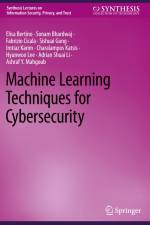av Aljosha Judmayer
405,-
The new field of cryptographic currencies and consensus ledgers, commonly referred to as blockchains, is receiving increasing interest from various different communities. These communities are very diverse and amongst others include: technical enthusiasts, activist groups, researchers from various disciplines, start ups, large enterprises, public authorities, banks, financial regulators, business men, investors, and also criminals. The scientific community adapted relatively slowly to this emerging and fast-moving field of cryptographic currencies and consensus ledgers. This was one reason that, for quite a while, the only resources available have been the Bitcoin source code, blog and forum posts, mailing lists, and other online publications. Also the original Bitcoin paper which initiated the hype was published online without any prior peer review. Following the original publication spirit of the Bitcoin paper, a lot of innovation in this field has repeatedly come from the community itself in the form of online publications and online conversations instead of established peer-reviewed scientific publishing. On the one side, this spirit of fast free software development, combined with the business aspects of cryptographic currencies, as well as the interests of today's time-to-market focused industry, produced a flood of publications, whitepapers, and prototypes. On the other side, this has led to deficits in systematization and a gap between practice and the theoretical understanding of this new field. This book aims to further close this gap and presents a well-structured overview of this broad field from a technical viewpoint. The archetype for modern cryptographic currencies and consensus ledgers is Bitcoin and its underlying Nakamoto consensus. Therefore we describe the inner workings of this protocol in great detail and discuss its relations to other derived systems.
























